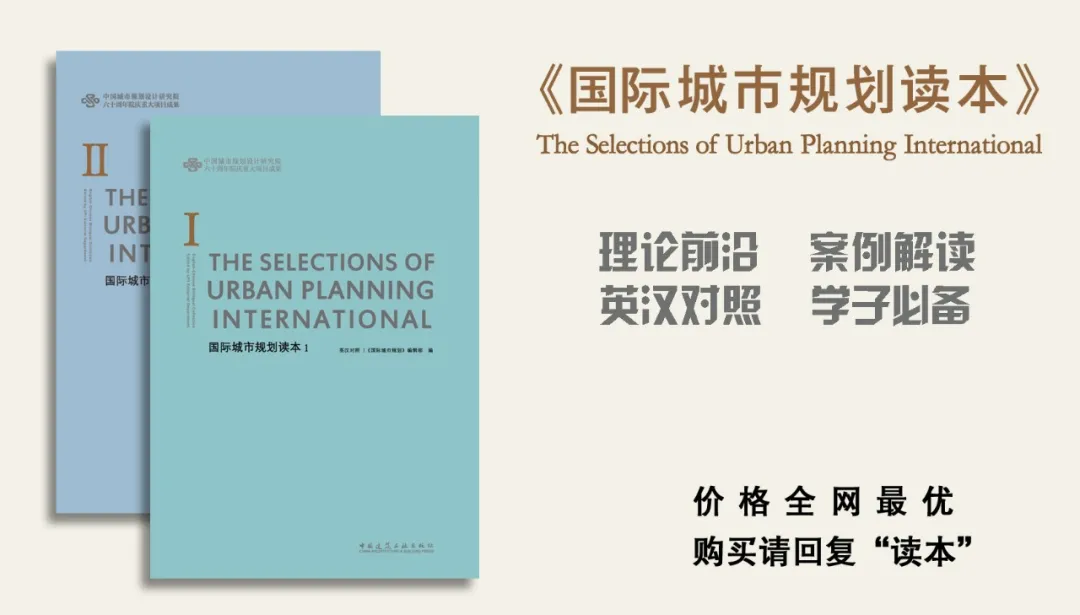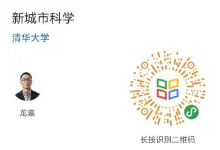为了更好地传播知识,推动期刊国际合作,本刊与《城市研究》(Urban Studies)杂志达成网络合作,不定期推送友刊的精选文章摘要。读者们可以借此了解国际城市研究的新动向,同时学习城市研究领域学术英文的正规表达。欢迎大家批评指正。
Informality through the state: How overregulationand tolerance shape informal land development in metropolitan Brazil
经由政府产生的非正规性——过度监管和纵容如何影响巴西大都市的非正规土地开发
João Tonucci(巴西米纳斯吉拉斯联邦大学)
Abstract: The relationship between the state and informal land development in Global South metropolises has yet not received much attention in urban studies. Concerning that knowledge gap, this paper investigates how the state regulates and inspects irregular and clandestine land subdivisions in the Metropolitan Region of Belo Horizonte (MRBH). A mixed-methods approach, focused on the inner workings of the land development control policy led by the MRBH Agency between 2009 and 2018, provides new evidence of the relationships between inspectors, developers, and prosecutors, among other actors. By delving deep into the intricate nexus between a changing regulatory landscape and the bureaucratic, street-level, and everyday enforcement practices by officials, the paper reveals how land development control, directly and indirectly, shapes informal land development in the MRBH. Particularly, it sheds light on how land development control unrolls through a contradictory combination of overregulation on one side and tolerance on the other. In light of this, I argue that, as land development control evolves without effectively tackling the land question and the structural drivers of informality, the state becomes paradoxically entangled in the production of the same forms of informality it is expected to curb. Therefore, land development control is better understood as a fragile and ambivalent state compromise between the need to regulate urban expansion and market-driven informal urbanisation. By creating opportunities for rent extraction and capital accumulation which are explored by informal land developers, the state has been crucial for property-led informal urbanisation in metropolitan Brazil.
摘要:从事城市研究的学者尚未对全球南方大都市中的政府与非正规土地开发之间的关系进行过多关注和探索。为了填补这方面的知识空缺,本文考察了巴西贝洛奥里藏特大都市区(MRBH: Metropolitan Region of Belo Horizonte)的政府如何监管和检查不规范的私下土地再分割。本文采用混合研究方法,重点关注2009—2018年MRBH政府机构主导的土地开发控制政策的内部运作,为检查员、开发商、检察官以及其他参与者之间的关系提供了新的证据。通过深入研究不断变化的监管环境与官员在政府、街道及日常层面的执法实践之间错综复杂的关系,本文揭示了土地开发控制如何直接和间接地影响MRBH的非正规土地开发。本文尤其揭示了土地开发控制如何通过一方面过度监管、另一方面又容忍的矛盾组合来展开。有鉴于此,本文认为,随着土地开发控制的发展,如果土地问题和非正规性的结构性驱动因素得不到有效解决,政府就会矛盾地卷入其本应遏制的相同形式的非正规性生产中。因此,土地开发控制可以更好地理解为政府在城市扩张监管的必要性与市场驱动的非正规城市化之间的脆弱而矛盾的妥协。通过为非正规土地开发商所寻求的租金抽取和资本积累创造机会,政府在巴西大都市区以房地产为主导的非正规城市化中扮演了至关重要的角色。
Keywords: Belo Horizonte, informality, informal land development, land use, policy, politics, real estate
关键词:贝洛奥里藏特、非正规性、非正规土地开发、土地利用、政策、政治、房地产
原文地址:https://doi.org/10.1177/00420980231215708
Inventraset assemblages: The spatial logic of informal street vending, transport and settlement
Inventraset组合——非正规街头贩卖、交通和住区的空间逻辑
Redento B Recio(澳大利亚墨尔本大学)
Abstract: Urban informality remains a central challenge for those engaged in understanding and transforming global South cities. There have been calls to develop new conceptual language geared to this challenge and much debate around the degree to which it might be subsumed within global urban theory. We argue that theories of informal urbanism need to be grounded in an understanding of how it works to sustain livelihoods, moving beyond studies of informal settlement, street vending and transport to understand the synergies, interrelations and interdependencies between them. Informal vending and transport provide employment and produce cheap goods and mobility; informal settlement produces affordable housing in key locations with access and mobility. ‘Inventraset’ is a portmanteau concept that links informal vending, transport and settlement into a dynamic urban assemblage that is inventive, transgressive and settled. This model is demonstrated through an empirical study of the spatial logic of the inventraset triangle within the megacities of Manila and Jakarta. Here the informal is normal, whether displayed in the intensities of transit nodes and street markets or camouflaged within zones of exclusion. This is not an ‘informal city’ but one where informal street vending, transport and settlement are geared to formal spatial and governance structures in different ways in differentneighbourhoods − an assemblage of informal/formal and of vending/transport/settlement without which the urban economy would collapse. This is a call not simply to rename the informal but to understand it as a mode of production that is more than the inverse of the formal.
摘要:对于致力于理解和改造全球南方城市的人来说,城市非正规性仍然是一个核心挑战。学者们呼吁开发新的概念语言来应对这一挑战,并围绕其可在多大程度上纳入全球城市理论展开了许多争论。我们认为,非正规城市化理论需要建立在对城市居民如何维持生计的理解之上,超越对非正规住区、街头贩卖和交通的研究,以理解它们之间的协同作用、相互关系和相互依赖性。非正规贩卖和交通提供就业机会并产生廉价商品和流动性;非正规住区在具有便利性和流动性的重要地点提供经济适用的住房。Inventraset是一个混合概念【包括informal vending, transport and settlement】,它将非正规贩卖、交通和住区合并,形成一个具有创造性、突破性和稳定性的充满活力的城市组合。本文对两个特大城市——马尼拉和雅加达内部的Inventraset三角的空间逻辑进行了实证研究,以此来验证该模型。在这里,非正规是正常的,可以从交通节点和街头市场的密集度中看出来,也可能隐蔽在禁区内。这不是一个“非正规的城市”,而是一个非正规的街头贩卖、交通和住区在不同的街区以不同的方式适应正式空间和治理结构的城市——非正规/正规的组合以及贩卖/交通/住区的组合,没有这种组合城市经济会崩溃。这不仅是呼吁对非正规进行重新命名,还呼吁将其理解为一种生产方式,而不是与正规相对。
Keywords: assemblage, informal settlement, informal transport, informal urbanism, street vending
关键词:组合、非正规住区、非正规交通、非正规城市化、街头贩卖
原文地址:https://doi.org/10.1177/00420980231223060

Smart cities at the intersection of public governance paradigms for sustainability
Giuseppe Grossi(瑞典克里斯蒂安斯塔德大学)
Abstract: As a research domain, the smart city keeps growing, despite the remaining contradictions and ambiguity related to its conceptual aspects. We propose to dig deeper into the complex socio-technical nature of the smart city and examine the concept through the lens of different public governance paradigms, therefore aligning it with the sustainability outcomes. Embracing interrelated dimensions of humans, technologies and organisations, the smart city can be viewed through the intersection of public governance paradigms (digital governance, collaborative governance and networks). The case of the smart city initiative of Tampere in Finland serves as an empirical illustration of how the proposed conceptual model might be applied in practice. Providing a novel approach to the smart city from a public management perspective, this model would allow policymakers to acquire a more comprehensive understanding of smart city governance and its multi-dimensional outcomes, in terms of social, environmental and economic sustainability. This approach enables the unlocking of the potential to generate multiple values for each group of actors and ensure more effective integration of smart initiatives, policies and projects, based on the public governance paradigms.
摘要:尽管在概念方面仍然存在矛盾和模糊性,但智慧城市作为一个研究领域正不断发展。我们提议更深入地挖掘智慧城市复杂的社会技术性质,并通过不同公共治理范式的视角来审视这一概念,从而使其与可持续发展成果保持一致。智慧城市涵盖了人类、技术和组织相互关联的维度,我们可以通过各种公共治理范式(数字治理、协作治理和网络)的交汇来考察智慧城市。芬兰坦佩雷智慧城市倡议的案例为我们所提出的概念模型如何应用于实践提供了实证例证。这一模型提供了一种新颖的方法,从公共管理的视角去了解智慧城市,使政策制定者能够更全面地了解智慧城市治理及其在社会、环境和经济可持续发展方面的多维成果。基于公共治理范式,这种方法能够让每个参与群体释放创造多种价值的潜力,并确保更有效地整合智慧举措、政策和项目。
Keywords: public governance, smart cities, sustainability
原文地址:https://doi.org/10.1177/00420980241227807

Back to the suburbs? Millennial residential locations from the Great Recession to the pandemic
Hyojung Lee(韩国首尔大学)
Whitney Airgood-Obrycki(美国哈佛大学)
Abstract: In the past decade, there has been a great deal of attention paid to and speculation about the residential mobility and location decisions of millennials. Academics and practitioners alike have been trying to determine where millennials are moving and why, including whether they are leading a ‘back to the city’ movement or whether they are moving to the suburbs as previous generations did at their age. Using US Census data, this article examines the geographical population distribution of young adults in the USA in recent decades. Categorising neighbourhoods by their urban or suburban character and by their central or peripheral location, we find that millennials lived in urban areas on the heels of the Great Recession at higher rates than previous generations. However, over the decade, the millennial population gradually shifted towards suburban areas: central urban and peripheral urban neighbourhoodslargely lost millennial residents from 2011 to 2021, while peripheral suburban neighbourhoods experienced substantial gains. When it comes to neighbourhood amenities (e.g. restaurants and parks), millennials largely left amenity-rich areas for neighbourhoods with fewer amenities, though these amenities grew faster in the neighbourhoods that gained millennials the most. Millennial suburbanisation seems to be associated with housing affordability and demand for larger homes, as the population shift was more pronounced in the metros that have lower housing affordability and a lower share of larger homes in their central urban neighbourhoods. The results indicate the importance of affordable and right-sized housing, complemented with neighbourhood amenities, in attracting and retaining this population group.
摘要:在过去的十年中,千禧一代的居住流动性和选址决策受到了广泛的关注和猜测。学术界和相关从业者一直在试图确定千禧一代流动的动向以及原因,包括他们是否正在引领“重返城市”运动,或者他们是否像前几代人在同龄时那样迁移到郊区。本文利用美国人口普查数据,研究了近几十年来美国年轻人的地理分布。我们根据城市或郊区特征以及中心或外围位置对街区进行分类,发现千禧一代在“大衰退”之后居住在城市地区的比例高于前几代人。然而近十年来,千禧一代人口逐渐向郊区转移:2011—2021年,中心城区和周边城市街区的千禧一代居民大量流失,而外围郊区街区的千禧一代人口则出现大幅增长。在街区便利设施(例如餐馆和公园)方面,尽管在千禧一代增长最多的街区中便利设施增长更快,但千禧一代大多离开了便利设施丰富的地区,到了便利设施较少的街区。千禧一代人口的郊区化似乎与住房负担能力和对更大住房的需求有关,因为人口转移在一些都会区更为明显,那些都会区住房可负担性较低,中心城市街区较大住房所占的比例也较低。本文的研究结果表明,经济适用且大小合适的住房,辅之以街区便利设施,对于吸引和留住千禧一代人口非常重要。
Keywords: demographics, housing, migration, millennial generation, neighbourhood, planning, suburban neighbourhood
关键词:人口统计、住房、迁移、千禧一代、街区、规划、郊区的街区
原文地址:https://doi.org/10.1177/00420980231221048

Urban Studies 文章精选(224-228)
Urban Studies 文章精选(229-233)
Urban Studies 文章精选(234-237)
排版 | 顾春雪
推介 Urban Studies 期刊的最新文章和城市研究的最新动态
搭建中国城市研究学者交流切磋的学术平台

原文始发于微信公众号(国际城市规划):期刊导航 | Urban Studies文章精选(238-241)







 规划问道
规划问道










